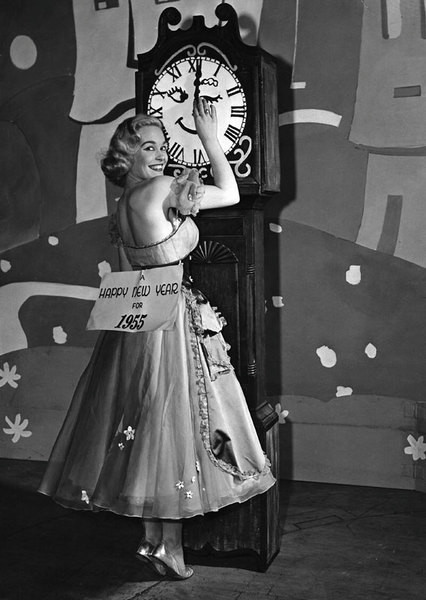 Clocks in the interiorTurn of time The first devices forTime measurements appeared at least 13 centuries before the birth of Christ and since then have evolved to ultra-precise quantum devices. In the Middle Ages, it was believed that the Old Testament King Solomon invented the clock, although it was not specified what kind of clock it was: solar, water, sand or mechanical. By the way, it seems that from the very beginning, consumers were not so much concerned with the question of "what time is it?" as with the appearance of this device. Therefore, with each century, it became more luxurious and sophisticated. Victims of fashion The first portable clock was made at the beginning of the 16th century by the Nuremberg master Peter Henlein. Their mechanism was so small that they easily fit in a pocket. But watches became a truly fashionable accessory only in the 18th century, thanks to the favorite of King Louis XV, the Marquise de Pompadour. She ordered earrings in the form of a miniature clock from a jeweler, after which all of Paris rushed to order jewelry with clocks. Men wore them on their belts among other trinket-trinkets, loved to twirl them in public and did not spare money to decorate their toys. Often the dial and cover were covered with erotic and even pornographic pictures. After the vest took pride of place in the men's wardrobe, the watch case from convex became flatter in order to fit in the pocket. Fashionistas who did not have the means to buy an expensive accessory (the price of the "unsleeping Breguet" praised by Pushkin reached three thousand rubles) resorted to trickery - they wore only a watch chain, one end of which was attached to the vest, the other hidden in the folds of clothing. We also owe wristwatches to men's fashion. True, at first only the military wore them. But in 1911 the House of Cartier released the first batch of wristwatches, which were sent not to the army, but to fashionable stores. Their prototype was the clock designed by Louis Cartier for the aviator Alberto Santos-Dumont, so that he could look at the dial without taking his hands off the control stick. On the wall and on the table In the 16th century, no decent home could do without a table clock in a metal case. They often took the most bizarre form - a wooded mountain with a castle, a tower, a ship with sails. Wall clocks competed with table clocks. German burghers especially loved "picture clocks". Behind the picturesque image, they hid a clock mechanism that not only showed the time, but also set in motion the figures painted on the canvas. In 1629, Augsburg craftsmen presented the Elector August of Saxony with the first cuckoo clock, which is still a symbol of home comfort. Grandfather's clock
Clocks in the interiorTurn of time The first devices forTime measurements appeared at least 13 centuries before the birth of Christ and since then have evolved to ultra-precise quantum devices. In the Middle Ages, it was believed that the Old Testament King Solomon invented the clock, although it was not specified what kind of clock it was: solar, water, sand or mechanical. By the way, it seems that from the very beginning, consumers were not so much concerned with the question of "what time is it?" as with the appearance of this device. Therefore, with each century, it became more luxurious and sophisticated. Victims of fashion The first portable clock was made at the beginning of the 16th century by the Nuremberg master Peter Henlein. Their mechanism was so small that they easily fit in a pocket. But watches became a truly fashionable accessory only in the 18th century, thanks to the favorite of King Louis XV, the Marquise de Pompadour. She ordered earrings in the form of a miniature clock from a jeweler, after which all of Paris rushed to order jewelry with clocks. Men wore them on their belts among other trinket-trinkets, loved to twirl them in public and did not spare money to decorate their toys. Often the dial and cover were covered with erotic and even pornographic pictures. After the vest took pride of place in the men's wardrobe, the watch case from convex became flatter in order to fit in the pocket. Fashionistas who did not have the means to buy an expensive accessory (the price of the "unsleeping Breguet" praised by Pushkin reached three thousand rubles) resorted to trickery - they wore only a watch chain, one end of which was attached to the vest, the other hidden in the folds of clothing. We also owe wristwatches to men's fashion. True, at first only the military wore them. But in 1911 the House of Cartier released the first batch of wristwatches, which were sent not to the army, but to fashionable stores. Their prototype was the clock designed by Louis Cartier for the aviator Alberto Santos-Dumont, so that he could look at the dial without taking his hands off the control stick. On the wall and on the table In the 16th century, no decent home could do without a table clock in a metal case. They often took the most bizarre form - a wooded mountain with a castle, a tower, a ship with sails. Wall clocks competed with table clocks. German burghers especially loved "picture clocks". Behind the picturesque image, they hid a clock mechanism that not only showed the time, but also set in motion the figures painted on the canvas. In 1629, Augsburg craftsmen presented the Elector August of Saxony with the first cuckoo clock, which is still a symbol of home comfort. Grandfather's clock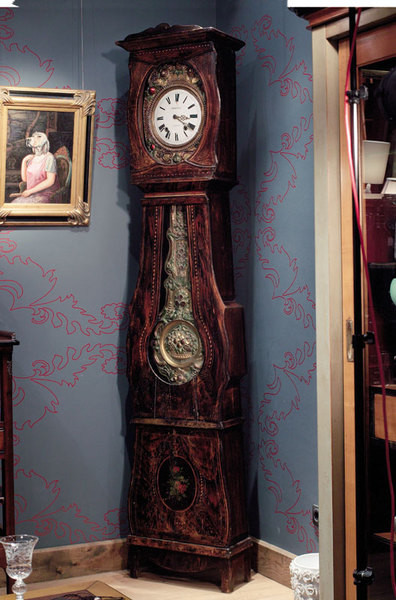 Wall clocks in the interior. It has been like this for many centuriesare called floor clocks. The English even have a song "grandfather's clock was too big for the shelf, so it stood on the floor for 90 years". However, it was not the English who invented them, but the Germans, around the beginning of the 17th century. At that time, floor clocks were two meters high and needed to be wound every 12 hours. A couple of centuries later, they grew even larger and acquired a pendulum. The decor and shape of the case were made in accordance with the furniture fashion of the time. However, even then, carpenters often imitated the work of their predecessors. Watches in lacquered cases were especially valued, so luxury goods merchants sent ready-made wooden cases to the Far East and received them back painted and varnished, and in the 18th century, they began to import Japanese lacquered cases to Europe. Switzerland Everyone knows that Swiss watches are the standard of quality. But not everyone knows that the flourishing of watchmaking in Switzerland, oddly enough, was facilitated by the Reformation. Followers of Jean Calvin, who preached the rejection of corrupting luxury, fled to this quiet haven from all over Europe. Former jewelers became watchmakers, but they could not forget their old profession and abundantly decorated their products with fine engraving, enamel and inlay. During the Great French Revolution, many Parisian artisans fled to Switzerland, among whom was probably the most famous watchmaker of all time and people, Abraham Louis Breguet. In the 70s of the last century, the Swiss watch industry was going through a terrible crisis. Mechanical watches could not compete with cheap Asian electronics. The situation was saved by financial analyst Nicholas Hayek, who came up with the idea of reorienting the market to mass, less expensive, but at the same time Swiss-quality products. Today, the Swatch Group company created by Hayek, among other things, owns such luxury brands as Breguet, Tissot, Omega and others. Amazing mechanics Did you know that the prototype of the modern tape recorder can be called the watch of the Strasbourg master Isaac Hebrecht? Every hour they play music written to the words of the prayer "Our Father". The tower clock on St. Mark's Square in Venice, made in 1495 by father and son Ranieri, marks every hour with a bell strike, shows the phases of the moon, zodiac signs, and at Christmas and Easter puts on a theatrical performance with the Holy Family, angels and the Magi. In 500 years, the clock stopped only three times (for example, when in 1549 the keeper drank away parts of the mechanism). In the 18th century, automatic watches were very popular, which amused the public. For example, the "Peacock" watch from the Hermitage demonstrate all the achievements of mechanics of that time: from the melody to the peacock spreading its tail. Time travel is possible!
Wall clocks in the interior. It has been like this for many centuriesare called floor clocks. The English even have a song "grandfather's clock was too big for the shelf, so it stood on the floor for 90 years". However, it was not the English who invented them, but the Germans, around the beginning of the 17th century. At that time, floor clocks were two meters high and needed to be wound every 12 hours. A couple of centuries later, they grew even larger and acquired a pendulum. The decor and shape of the case were made in accordance with the furniture fashion of the time. However, even then, carpenters often imitated the work of their predecessors. Watches in lacquered cases were especially valued, so luxury goods merchants sent ready-made wooden cases to the Far East and received them back painted and varnished, and in the 18th century, they began to import Japanese lacquered cases to Europe. Switzerland Everyone knows that Swiss watches are the standard of quality. But not everyone knows that the flourishing of watchmaking in Switzerland, oddly enough, was facilitated by the Reformation. Followers of Jean Calvin, who preached the rejection of corrupting luxury, fled to this quiet haven from all over Europe. Former jewelers became watchmakers, but they could not forget their old profession and abundantly decorated their products with fine engraving, enamel and inlay. During the Great French Revolution, many Parisian artisans fled to Switzerland, among whom was probably the most famous watchmaker of all time and people, Abraham Louis Breguet. In the 70s of the last century, the Swiss watch industry was going through a terrible crisis. Mechanical watches could not compete with cheap Asian electronics. The situation was saved by financial analyst Nicholas Hayek, who came up with the idea of reorienting the market to mass, less expensive, but at the same time Swiss-quality products. Today, the Swatch Group company created by Hayek, among other things, owns such luxury brands as Breguet, Tissot, Omega and others. Amazing mechanics Did you know that the prototype of the modern tape recorder can be called the watch of the Strasbourg master Isaac Hebrecht? Every hour they play music written to the words of the prayer "Our Father". The tower clock on St. Mark's Square in Venice, made in 1495 by father and son Ranieri, marks every hour with a bell strike, shows the phases of the moon, zodiac signs, and at Christmas and Easter puts on a theatrical performance with the Holy Family, angels and the Magi. In 500 years, the clock stopped only three times (for example, when in 1549 the keeper drank away parts of the mechanism). In the 18th century, automatic watches were very popular, which amused the public. For example, the "Peacock" watch from the Hermitage demonstrate all the achievements of mechanics of that time: from the melody to the peacock spreading its tail. Time travel is possible!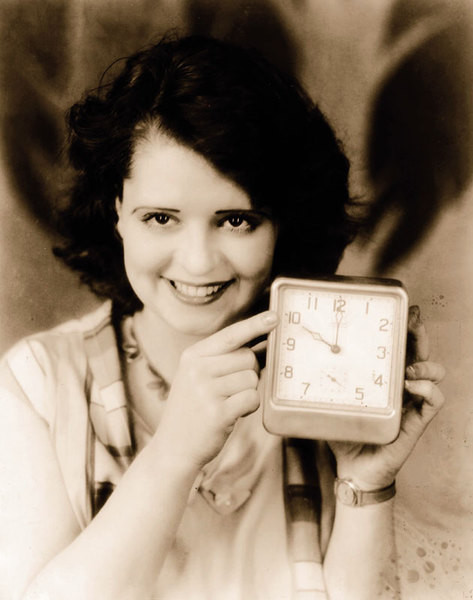 That you can travel through time in the same wayeasily, as in space, was first publicly declared by the cleaner of a haberdashery store Herbert Wells, who wrote the book "The Time Machine" in his spare time. Naturally, his contemporaries considered his prophecy to be nonsense. Then the physicist Albert Einstein proved that time is a relative category. In 1949, the mathematician Kurt Gödel substantiated the possibility of such a journey, and in 1988, the physicist Kip Thorne stated that at the moment when people learn to find and accelerate holes in space, they will be able to penetrate time. While scientists are struggling with the theory, the American company The Time Travel Fund is engaged in practice. Quite briskly (for $ 10) it sells tickets to the future. Clients are assured that the enterprise will survive until the year 2500, in which time machine will definitely be built. It will transfer all those who pay into the future. Moreover, the company places one dollar from each ticket into the bank account of the client. At 5% per annum, in five centuries one dollar will grow to $39,323,261,827.22, and the one who was a nobody will become the Onassis of the 26th century. What's new?
That you can travel through time in the same wayeasily, as in space, was first publicly declared by the cleaner of a haberdashery store Herbert Wells, who wrote the book "The Time Machine" in his spare time. Naturally, his contemporaries considered his prophecy to be nonsense. Then the physicist Albert Einstein proved that time is a relative category. In 1949, the mathematician Kurt Gödel substantiated the possibility of such a journey, and in 1988, the physicist Kip Thorne stated that at the moment when people learn to find and accelerate holes in space, they will be able to penetrate time. While scientists are struggling with the theory, the American company The Time Travel Fund is engaged in practice. Quite briskly (for $ 10) it sells tickets to the future. Clients are assured that the enterprise will survive until the year 2500, in which time machine will definitely be built. It will transfer all those who pay into the future. Moreover, the company places one dollar from each ticket into the bank account of the client. At 5% per annum, in five centuries one dollar will grow to $39,323,261,827.22, and the one who was a nobody will become the Onassis of the 26th century. What's new?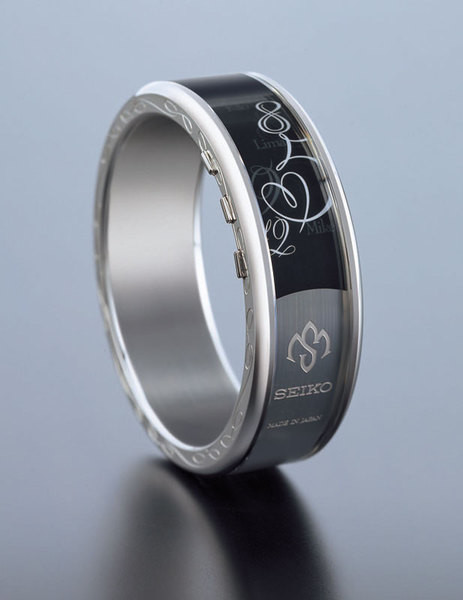 If a Swiss hand-assembled watch isa symbol of the owner's high social status, then a watch with a display made of "electronic paper" speaks of its progressiveness. Released last year by Seiko Spectrum in a quantity of only 500 copies, they are already a rarity and are resold at a price significantly exceeding the selling price. The excitement around this model was caused by the fact that a third of the watch case is occupied by the most fashionable novelty of our time - "electronic paper", which the American company E Ink has been struggling to develop for the last ten years. Electronic paper is the thinnest display that can "remember" and store information for a long time. In addition, it can be rolled into a tube, so according to analysts' forecasts, in 20 years newspapers and books will be "published" on such paper.
If a Swiss hand-assembled watch isa symbol of the owner's high social status, then a watch with a display made of "electronic paper" speaks of its progressiveness. Released last year by Seiko Spectrum in a quantity of only 500 copies, they are already a rarity and are resold at a price significantly exceeding the selling price. The excitement around this model was caused by the fact that a third of the watch case is occupied by the most fashionable novelty of our time - "electronic paper", which the American company E Ink has been struggling to develop for the last ten years. Electronic paper is the thinnest display that can "remember" and store information for a long time. In addition, it can be rolled into a tube, so according to analysts' forecasts, in 20 years newspapers and books will be "published" on such paper. Sundial The fact that the hands on our clocksmove from left to right, we owe to the ancient sundial, the shadow in it followed the sun. By the way, the obelisks of Ancient Egypt are nothing more than parts of a sundial. Water clocks Sundials were too dependent on the weather, and therefore were unreliable. The restless human mind found a replacement for them - a water clock. On their basis, Plato constructed the first alarm clock in history: pouring from one vessel to another, water displaced the air from there. It rose through a tube to a flute, which began to play. Hourglasses appeared in the 8th century among sailors. Every half hour, sand was poured from one reservoir to another, after which the clock was turned over and struck the side bell. This is where the expression "to strike the bells" comes from. Tower clocks Vertical sundials on the walls of temples appeared in Byzantium. Tower clocks in the Middle Ages were most likely water clocks. The first mechanical tower clock that has come down to us (15th century) decorates the church in Belarusian Grodno. It is set in motion by a 70-kilogram weight, which is raised every day to the height of a five-story building by the clock keeper. Mechanical clocks The year 1250 is considered the birth year of mechanical clocks, and their father is the Frenchman Villard de Goncourt, who left us the first drawing of a clock that was set in motion by a weight. The oldest mechanical clocks that have come down to us date back to 1348. Quantum clocks These clocks, designed by the Japanese in 2005, are considered the most accurate today. Strontium atoms play the role of a pendulum in them. The error of the clock is only one quintillionth of a second per day.
Sundial The fact that the hands on our clocksmove from left to right, we owe to the ancient sundial, the shadow in it followed the sun. By the way, the obelisks of Ancient Egypt are nothing more than parts of a sundial. Water clocks Sundials were too dependent on the weather, and therefore were unreliable. The restless human mind found a replacement for them - a water clock. On their basis, Plato constructed the first alarm clock in history: pouring from one vessel to another, water displaced the air from there. It rose through a tube to a flute, which began to play. Hourglasses appeared in the 8th century among sailors. Every half hour, sand was poured from one reservoir to another, after which the clock was turned over and struck the side bell. This is where the expression "to strike the bells" comes from. Tower clocks Vertical sundials on the walls of temples appeared in Byzantium. Tower clocks in the Middle Ages were most likely water clocks. The first mechanical tower clock that has come down to us (15th century) decorates the church in Belarusian Grodno. It is set in motion by a 70-kilogram weight, which is raised every day to the height of a five-story building by the clock keeper. Mechanical clocks The year 1250 is considered the birth year of mechanical clocks, and their father is the Frenchman Villard de Goncourt, who left us the first drawing of a clock that was set in motion by a weight. The oldest mechanical clocks that have come down to us date back to 1348. Quantum clocks These clocks, designed by the Japanese in 2005, are considered the most accurate today. Strontium atoms play the role of a pendulum in them. The error of the clock is only one quintillionth of a second per day.
People
Vitruvius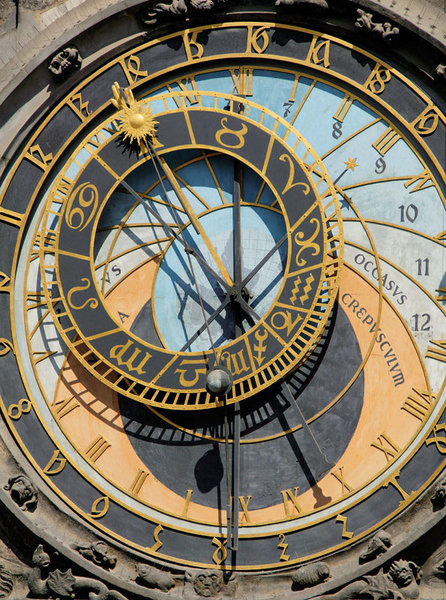 In the 1st century BCThis Roman architect improved the water clock by adding a dial and an hour hand. The minute hand appeared on the clock only in 1675, and the second hand in 1700, but for a long time it was considered unnecessary nonsense. Marie Antoinette (1755-1793) In 1783, watchmaker Abraham Louis Breguet decided to present the Queen of France with a watch with all the technical innovations of the time: an automatic winding mechanism, a perpetual calendar, a stopwatch, a thermometer, a power reserve indicator... Work on the watch was completed only in 1827, 34 years after the queen's execution. Jean Cazes The largest clock mechanism in the world was created by Jean Cazes. His 30-metre clock, listed in the Guinness Book of Records, decorates the Cornavin Hotel in Geneva.
In the 1st century BCThis Roman architect improved the water clock by adding a dial and an hour hand. The minute hand appeared on the clock only in 1675, and the second hand in 1700, but for a long time it was considered unnecessary nonsense. Marie Antoinette (1755-1793) In 1783, watchmaker Abraham Louis Breguet decided to present the Queen of France with a watch with all the technical innovations of the time: an automatic winding mechanism, a perpetual calendar, a stopwatch, a thermometer, a power reserve indicator... Work on the watch was completed only in 1827, 34 years after the queen's execution. Jean Cazes The largest clock mechanism in the world was created by Jean Cazes. His 30-metre clock, listed in the Guinness Book of Records, decorates the Cornavin Hotel in Geneva.









